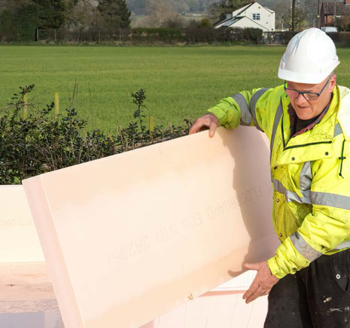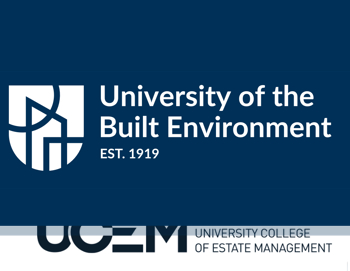Carbon capture processes
Contents |
[edit] Introduction
Carbon capture is a process that can remove as much as 90% of the carbon dioxide (CO2) gas emitted from fossil fuel (coal, oil or gas) power stations which are the main source of anthropogenic CO2 emissions. But the process is also used in cement making and other industries, and can be used to extract carbon from the atmosphere.
Carbon capture has been used for decades by the oil and gas sectors, although long-term storage of CO2 is a relatively new activity. It is thought that carbon capture could achieve around 20% of the total greenhouse gas emissions reductions needed to achieve 2050 targets. It is seen as one of the few practical ways to efficiently decarbonise the industrial sector quickly.
[edit] Carbon capture and storage (CCS)
CO2 captured from industrial processes is captured for secure and indefinite storage. In the UK storage of large quantities of CO2 is likley to take place in offshore underground saline formations or depleted oil and gas fields.
Although at the time of writing there are around 17 operating CCS projects globally, there are no commercial-scale CCS projects in the UK, but relevant health and safety regulations exist for future operators to abide by.
There are three stages to carbon capture and storage:
- CO2 is trapped and separated from other gases.
- CO2 is transported to a storage site.
- CO2 is stored away from the atmosphere.
[edit] Trapping and separating CO2
There are three ways to extract CO2:
- Post-combustion capture - applied mostly to power plants, post-combustion capture involves capturing the CO2 from the flue gases produced by fossil-fuel combustion. Typically, chemical solvents are used to achieve this. The technology can be retrofitted to existing power plants.
- Pre-combustion - this process involves removing the CO2 before combustion takes place in chemical, fertilizer, gaseous fuel and power production processes. Rather than being combusted, fuel is ‘gassified’ to produce a synthetic gas (syngas). The carbon monoxide (CO) from this is converted to CO2 which, after the action of solvents, is freed from the hydrogen present.
- Oxy-fuel combustion - fossil fuel is burned in oxygen to produce a steam-CO2 mixture from which the CO2 is separated by cooling and compression. This is a relatively expensive process becuase of the amount of oxygen required, however it ensures that only around 10% of a power plant’s emissions enter the atmosphere.
It may also be possible to extract CO2 from ambient air (direct air capture), although it is more difficult than the aforementioned processes due to the lower concentration of the gas in air. Work on this is still at an early stage.
[edit] Transportation of CO2
Once captured, CO2 must be transported to suitable sites for permanent storage. Conveyance is mostly by pipeline as this is one of the cheapest methods for large volumes. CO2 can also be transported – eg by ships – to other locations for industrial use.
[edit] Storing CO2
The three techniques available for storing CO2 are:
- In deep geological formations.
- In deep ocean water.
- In the form of mineral carbonates (mineral storage).
For more information see: http://www.bgs.ac.uk/discoveringGeology/climateChange/CCS/howcanCO2bestored.html
[edit] Related articles on Designing Buildings
- Carbon dioxide capture and utilisation.
- Carbon capture and storage.
- Carbon emissions.
- Carbon footprint.
- Carbon Reduction Commitment Energy Efficiency Scheme.
- Climate change act.
- Climate change science.
- Government publishes 2021 guidance on carbon capture technologies.
- Greenhouse gases.
- Environmental impact.
- Ozone depleting substances.
- UK Climate Change Risk Assessment.
- Using CO2 to make construction products and materials.
Featured articles and news
The benefits of engaging with insulation manufacturers
When considering ground floor constructions.
Lighting Industry endorses Blueprint for Electrification
The Lighting Industry Association fully supports the ECA Blueprint as a timely, urgent call to action.
BSRIA Sentinel Clerk of Works Training Case Study
Strengthening expertise to enhance service delivery with integrated cutting-edge industry knowledge.
Impact report from the Supply Chain Sustainability School
Free sustainability skills, training and support delivered to thousands of UK companies to help cut carbon.
The Building Safety Forum at the Installershow 2025
With speakers confirmed for 24 June as part of Building Safety Week.
The UK’s largest air pollution campaign.
Future Homes Standard, now includes solar, but what else?
Will the new standard, due to in the Autumn, go far enough in terms of performance ?
BSRIA Briefing: Cleaner Air, Better tomorrow
A look back at issues relating to inside and outside air quality, discussed during the BSRIA briefing in 2023.
Restoring Abbotsford's hothouse
Bringing the writer Walter Scott's garden to life.
Reflections on the spending review with CIAT.
Retired firefighter cycles world to raise Grenfell funds
Leaving on 14 June 2025 Stephen will raise money for youth and schools through the Grenfell Foundation.
Key points for construction at a glance with industry reactions.
Functionality, visibility and sustainability
The simpler approach to specification.
Architects, architecture, buildings, and inspiration in film
The close ties between makers and the movies, with our long list of suggested viewing.
SELECT three-point plan for action issued to MSPs
Call for Scottish regulation, green skills and recognition of electrotechnical industry as part of a manifesto for Scottish Parliamentary elections.
UCEM becomes the University of the Built Environment
Major milestone in its 106-year history, follows recent merger with London School of Architecture (LSE).
Professional practical experience for Architects in training
The long process to transform the nature of education and professional practical experience in the Architecture profession following recent reports.






















